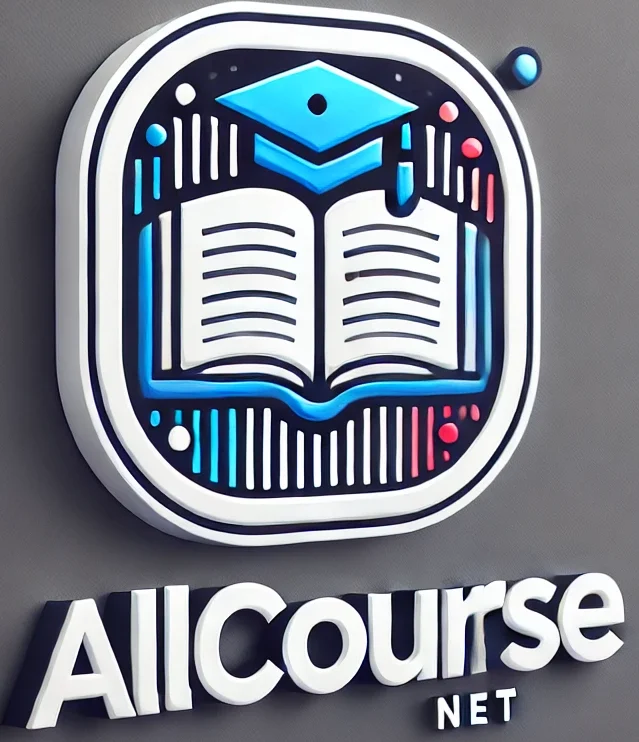The Future of Connection: How Artificial Intelligence Is Transforming the Way We Speak, Listen, and Relate
🧭1. The New Language of AI-Driven Communication
Let’s be honest — communication has changed more in the past five years than it did in the past fifty.
We used to think of communication as a simple human exchange — a conversation, a meeting, a speech. But in 2025, it’s become something more dynamic, more digital, and surprisingly, more personal. Every email, message, and presentation you deliver is now influenced by a quiet partner behind the scenes: artificial intelligence.
Think about how you write today. Before you even hit “send,” Grammarly polishes your tone, Poised listens to how you speak, and Yoodli helps you refine your rhythm and confidence. These tools aren’t just editing what we say — they’re teaching us how to express ourselves better. They’re like friendly mentors who never get tired of listening and always give honest feedback.
The result? We’re witnessing the rise of the AI-empowered communicator — someone who blends the precision of technology with the warmth of human emotion.
The beauty of these tools is that they don’t replace your voice — they help uncover it. They nudge you to pause where it matters, to choose the right words, to adjust your tone so your audience not only hears you but feels you.
And perhaps that’s the real transformation happening here. AI isn’t teaching us to sound robotic — it’s teaching us to sound more human.
Because at its heart, communication has always been about connection. And in this new era, technology isn’t taking that away — it’s helping us rediscover it.
🌍1.1 Why Communication Skills Matter More Than Ever in 2025
In a world buzzing with notifications, video calls, and AI-generated messages, communication isn’t just a “soft skill” anymore — it’s the skill that defines success.
Whether you’re leading a remote team, interviewing for a new job, or simply trying to make your ideas stand out online, the way you communicate has never been more important. The modern workplace runs on connection — not just Wi-Fi, but real human understanding.

💬 The Digital Shift
Over the past few years, our professional lives have gone through a massive transformation. Offices turned into virtual rooms, handshakes became emojis, and presentations moved from conference halls to camera lenses. Communication, once dependent on presence, now relies on clarity, tone, and digital body language.
And here’s the challenge — when so much of our interaction happens through screens, it’s easy for meaning to get lost. Messages can sound colder than intended. Humor might miss its mark. Feedback may come across as harsh or unclear. That’s where strong communication skills step in — and where AI tools are quietly becoming game-changers.
🚀 Why Employers Value It So Highly
If you look at the top skills lists from LinkedIn or the World Economic Forum for 2025, communication always lands near the top — right alongside adaptability and problem-solving. Why? Because it powers everything else.
-
A great communicator can lead teams across time zones.
-
A confident speaker can sell ideas that change businesses.
-
A clear writer can turn complex thoughts into powerful action.
AI may handle data, but humans still move the world through words.
🧠 The Learning Gap
Here’s something most people don’t realize — communication isn’t just about talking well; it’s about connecting well. And that takes awareness, empathy, and confidence — qualities we often struggle to practice on our own.
That’s why AI communication tools have become so valuable. They fill the gap between “knowing” how to communicate and actually doing it consistently. These digital coaches give instant, personalized feedback — something no textbook or YouTube tutorial can match.
They help learners spot the habits holding them back: the filler words, the awkward pauses, the tone that sounds too sharp or too shy. In other words, they shine a mirror on your communication style — and guide you toward growth, one conversation at a time.
❤️ The Human Edge
The truth is, communication isn’t about being perfect. It’s about being understood. And in 2025, being understood — across borders, platforms, and languages — is both an art and a necessity.
AI tools can show you how to polish your skills, but the real transformation happens when you blend that insight with empathy, storytelling, and sincerity. That’s when technology becomes more than a helper — it becomes a bridge to better human connection.
🤖 2.The Role of AI in Modern Communication Training
Just a few years ago, improving your communication skills meant joining a workshop, hiring a coach, or nervously practicing in front of a mirror. Today, all you need is your laptop, your voice, and an AI-powered app ready to give you instant, personalized feedback.
Artificial Intelligence is transforming the way we learn to communicate — and not just in technical ways. It’s reshaping how we understand confidence, empathy, and presence.
💡 From Generic Advice to Personalized Coaching
Traditional communication training often follows a “one-size-fits-all” model. You attend a seminar, take notes, and hope something sticks. AI flipped that script.
AI-powered tools analyze your actual communication — your writing, your tone, your pauses — and give you feedback tailored just to you.
-
Grammarly adjusts its suggestions to your intent: are you writing to inform, persuade, or connect?
-
Poised listens to your speech and shows you real-time data: how fast you talk, how confident you sound, even how often you use filler words.
-
Yoodli helps you practice public speaking, recording your speech and giving you a personal performance breakdown.
It’s like having a communication coach that never sleeps — one that adapts to your strengths, corrects your weak spots, and evolves as you do.

📊 Data-Driven Growth You Can See
One of the biggest breakthroughs AI brought to communication is measurable progress.
Instead of wondering, “Am I getting better?” you can actually track it. You’ll see:
-
Your clarity improving week by week.
-
Your filler words dropping over time.
-
Your tone becoming more balanced and confident.
-
Your written messages getting sharper and easier to read.
For learners, this feedback loop is gold. It keeps you motivated because you can see your growth — not just feel it.
🎯 The Smart Side of Self-Awareness
What makes these tools powerful isn’t just automation — it’s awareness. AI holds up a mirror to your communication habits in ways you might never notice yourself.
Maybe you talk too fast when nervous. Maybe your tone sounds too formal in casual emails. Maybe you use too many filler words in meetings. These insights don’t come from judgment — they come from data. And that’s what makes AI feedback so empowering: it’s objective, kind, and completely focused on helping you grow.
🧩 Where AI Meets Authenticity
Now, some people worry that AI will make communication robotic. But in truth, it’s doing the opposite. When used well, AI frees you to be more authentic.
Think of it this way: AI takes care of the technical polish — spelling, grammar, pacing, tone — so you can focus on what really matters: your message, your ideas, and your story.
AI isn’t here to replace human connection. It’s here to enhance it — by helping us communicate more clearly, thoughtfully, and confidently than ever before.
⚙️ 3. Top AI Tools Revolutionizing Communication in 2025
AI is no longer just a futuristic buzzword — it’s now a daily companion for anyone looking to communicate with more confidence, clarity, and impact. From polishing emails to mastering your speaking presence, AI-powered communication tools have turned into real-time personal coaches available 24/7.
Let’s dive into the top tools shaping how we speak, write, and connect in 2025 — and how learners, professionals, and communicators can make the most of them.

✍️ 1. Grammarly: Your Everyday Writing Assistant
Grammarly started as a grammar checker — now it’s a full-blown communication partner.
In 2025, it goes far beyond catching typos. Grammarly uses contextual AI to analyze your intent, tone, and audience before suggesting how to phrase things better.
How it helps:
-
Detects tone mismatches (like when an email sounds too formal or too cold).
-
Suggests rewrites for clarity and flow.
-
Gives “tone prediction” — showing how your message will feel to a reader.
-
Offers “style profiles” for business, casual, or creative writing.
How to use it best:
Turn on Grammarly’s tone detector before sending important messages. It teaches you to write not just correctly — but empathetically.
💡 Pro tip: Use Grammarly’s “Goals” feature to set your intent (inform, convince, describe). It tailors its feedback to help you sound natural and professional every time.
🗣️ 2. Poised: The AI Coach for Public Speakers
If you dread presentations or Zoom calls, Poised might become your best friend. It’s an AI-powered real-time speech coach that listens as you speak — and gives gentle, live feedback on your pace, energy, filler words, and tone.
Key features:
-
Real-time feedback on speech rate, clarity, and confidence.
-
Post-call analytics that show your progress.
-
Personalized training tips and daily challenges.
-
Integration with tools like Zoom and Google Meet.
Why it’s powerful:
Poised helps you hear yourself the way others do. Over time, it builds your awareness and confidence — helping you sound more authentic and self-assured in meetings, interviews, and presentations.
💡 Pro tip: Record short practice sessions daily — even 5 minutes. Poised gives quick, data-backed insights that help you sound better every single day.
🎤 3. Yoodli: Practice Speaking, Perfectly Human
Think of Yoodli as your friendly AI speech buddy. Whether you’re preparing for a presentation, an interview, or a TED Talk, Yoodli helps you practice, analyze, and improve — without judgment.
What it offers:
-
AI-driven feedback on pacing, filler words, and emotional tone.
-
Real-time transcript and video analysis.
-
AI-generated interview practice questions.
-
“Confidence score” that tracks your progress over time.
Why learners love it:
Yoodli focuses on empowerment, not criticism. It feels like having a coach who celebrates your small wins — while gently guiding you to refine your delivery.
💡 Pro tip: Use Yoodli’s “Mock Interview” mode. It’s a game-changer for learners prepping for job interviews or speech competitions.
💬 4. HyperWrite & Jasper: AI Writing with Personality
These AI tools are perfect for communicators who write a lot — whether it’s blog posts, pitches, or professional emails.
Unlike older text generators, HyperWrite and Jasper now understand your personal tone. They don’t just write for you; they write like you.
How they enhance communication:
-
Suggest more engaging openings and closings.
-
Offer tone and phrasing adjustments to suit different audiences.
-
Help build persuasive, human-centered messaging.
-
Can generate scripts, social captions, or email templates in seconds.
💡 Pro tip: Use these tools as creative partners — not replacements. Always infuse your own voice, story, and emotion. That’s what makes AI-generated content truly yours.
🧠 5. Rewind.ai & Otter.ai: Smarter Listening Tools
Communication isn’t just about talking — it’s about listening well.
That’s where tools like Otter.ai and Rewind.ai come in. These apps record, transcribe, and summarize your conversations, meetings, or lectures — helping you focus on what’s being said, not what to write down.
Why they matter:
-
They turn chaotic notes into clean, searchable transcripts.
-
You can revisit your tone, language, and key ideas later.
-
Perfect for learners improving their active listening skills.
💡 Pro tip: Use Otter.ai during your next online class or team meeting. Review the transcript later to reflect on your phrasing, engagement, and listening habits.
🌟 AI Is Your Communication Partner, Not a Replacement
The rise of these tools doesn’t mean human communication is fading — it’s evolving.
AI tools like Grammarly, Poised, and Yoodli are not making us robotic; they’re making us more aware. They remind us that clarity, empathy, and confidence are not fixed traits — they’re skills anyone can learn, refine, and master with the right support.
And the best part?
Every time you use these tools, you’re training both your voice and your mindset — becoming a communicator who listens deeply, speaks authentically, and connects effortlessly.
🌱 3. Building Real Communication Confidence with AI
Let’s be honest — no app or algorithm can give you instant confidence.
But here’s the thing: AI can coach you into it.
When used thoughtfully, AI tools become like personal trainers for your communication muscles. They help you spot blind spots, celebrate small wins, and keep improving one conversation at a time. Here’s how to make that transformation real.

🧩 1. Create Your Personalized AI Practice Routine
Think of your communication growth like fitness training. You don’t hit every muscle at once — you build a routine.
-
Morning: Use Grammarly to draft clear, confident emails.
-
Afternoon: Record a short voice memo and analyze it with Yoodli or Poised for tone and pacing.
-
Evening: Review your day’s meetings through Otter.ai or Rewind.ai — reflect on how often you listened vs. spoke.
Consistency is key. 10–15 minutes daily can rewire your habits faster than hours of binge-learning.
💡 Pro tip: Treat feedback as data, not judgment. AI doesn’t “criticize” you — it mirrors your growth areas.
🗣️ 2. Pair AI Practice with Real Conversations
AI can’t replace human connection — but it can prepare you for it.
Once you’ve practiced your pacing, tone, and phrasing using Poised or Yoodli, test those skills in real-world settings:
-
Speak up in a team meeting or class discussion.
-
Share your opinion in a group chat or LinkedIn post.
-
Record a short explainer video on something you know well.
Confidence builds through repetition — AI helps you warm up, humans help you grow.
🧠 3. Reflect, Don’t Just Perform
AI gives you metrics — filler words used, speaking speed, tone warmth — but the real magic comes when you reflect on what they mean.
Ask yourself:
-
Did my words land the way I intended?
-
Did I listen enough?
-
Was I being authentic or just “performing”?
True communication mastery isn’t about sounding perfect — it’s about being present and real.
💬 Try this: After each AI-coached session, jot down one insight in a communication journal. Over time, you’ll notice powerful patterns in your style and mindset.
🎯 4. Set Clear Learning Goals
Don’t just “get better at speaking.” Define what that means to you.
Maybe you want to:
-
Sound more confident during presentations.
-
Write with more warmth and clarity.
-
Stop overusing filler words.
-
Learn to pause effectively.
Once you know your goal, pick the right AI combo.
-
Poised for vocal clarity.
-
Grammarly for written tone.
-
Yoodli for overall communication awareness.
AI works best when your purpose is focused.
💪 5. Use AI as a Mirror, Not a Mask
It’s tempting to let AI polish your words so perfectly they stop sounding like you.
But the goal isn’t perfection — it’s presence.
The best communicators sound human: a mix of thoughtful pauses, warm tone, and imperfections that feel real. AI is your mirror — it helps you see yourself more clearly, not hide behind filters.
So use these tools to enhance your humanity, not erase it.
🌟 The Real Win: Confidence that Feels Natural
When you combine AI feedback with consistent self-reflection and real-world practice, you’ll notice a subtle but powerful shift:
You stop worrying about “sounding confident” — because you are.
You’ll write with ease, speak with warmth, and listen with genuine curiosity.
That’s not just communication — that’s connection.
⚖️ 3.1 The Challenges and Ethics of AI in Communication Training
Every great innovation comes with a question: How far should we go?
AI has brought incredible tools to our fingertips — tools that can teach us to speak with clarity, write with empathy, and listen with intention. But as with any technology, there’s a line between enhancing our skills and outsourcing them.
Let’s talk about that balance — the part of the conversation that often gets overlooked in the excitement of progress.
🤖 1. The Risk of Overreliance
AI can make communication effortless — maybe too effortless.
When Grammarly corrects your grammar, Poised adjusts your tone, and ChatGPT drafts your message, it’s easy to lean so much on these tools that you start losing your natural rhythm.
Communication is supposed to be imperfect — it’s full of quirks, slips, and moments of surprise that make us human.
If AI smooths every edge, we risk sounding polished but lifeless.
💬 The takeaway: Use AI as a guide, not a ghostwriter. Let it show you patterns, but keep your authentic voice front and center.
🧠 2. The Bias Problem
AI learns from data — and data, unfortunately, reflects human bias.
That means the feedback you get might sometimes reinforce certain cultural, linguistic, or even gender norms without realizing it. For instance, some tone analysis tools have been shown to label assertive women as “aggressive,” or non-native English phrasing as “unprofessional.”
That’s not your fault — it’s a design issue.
💡 The key is awareness. Take AI feedback with perspective. Trust your instincts and cultural understanding as much as the algorithm’s advice.
🕵️♀️ 3. Privacy and Trust
When you upload recordings or written samples to AI apps, you’re sharing pieces of your voice, your thoughts, your personality.
So, yes — privacy matters.
Always check how these platforms store your data.
Some tools, like Yoodli and Poised, emphasize strong data protection and private storage, while others might use your inputs to train their models.
📍 Pro tip: Before signing up, skim through privacy policies. Look for features like local data storage, opt-out of training use, and end-to-end encryption.
Your voice deserves the same protection as your identity.
🧩 4. The “Robotization” of Human Connection
Here’s the real paradox: AI helps us communicate better, but it can also make us less emotionally connected if we’re not careful.
When your words are filtered through too many AI layers, they may lose emotional warmth.
If we rely too heavily on AI-generated phrasing, we stop learning to feel what we’re saying.
The human part of communication — empathy, intuition, timing — can’t be automated. It comes from living, listening, and connecting.
So, while AI can teach you how to say something better, only you can know why it matters.
❤️ 5. The Balance Between Tech and Touch
AI is an incredible co-pilot — but you’re still the pilot.
Think of it like this:
-
AI can refine your delivery, but only you can create meaning.
-
AI can polish your tone, but only you can show empathy.
-
AI can guide your words, but only you can make people feel heard.
The real mastery comes from blending the best of both worlds — using smart tools without losing the warmth of genuine human communication.
🌍 6. Teaching the Next Generation of Communicators
If we use AI wisely, it can make communication training more inclusive and accessible than ever before.
Students, professionals, and lifelong learners everywhere can now practice, get feedback, and grow — even without access to expensive coaching or corporate workshops.
That’s powerful.
But the mission should always stay clear: AI should empower expression, not replace it.
Because at the end of the day, communication isn’t just about what you say — it’s about who you are when you say it.
🚀 4. The Future of AI-Driven Communication
We’re standing at a fascinating crossroads — a moment where communication and technology are evolving together faster than ever before.
If the past few years were about learning how to use AI, the next few will be about learning how to speak with it, through it, and because of it.
Let’s look at where things are headed — and how learners, professionals, and everyday communicators can grow with it.

💬 1. Emotionally Intelligent AI: The Next Big Leap
The next generation of AI communication tools won’t just analyze your tone — they’ll understand it.
Imagine a smart assistant that can sense when your voice sounds anxious before a presentation and gently coach you to slow your breathing. Or a writing tool that detects emotional mismatches — like when your message sounds cold even though your intent is warm — and helps you rewrite it authentically.
Companies like Poised, Yoodli, and Hume AI are already working on this — tools that read emotional cues in your voice, facial expression, and rhythm to give you more human-like feedback.
We’re heading toward a world where AI won’t just correct what we say, but how we feel when we say it.
🌐 2. Personalized Learning for Every Communicator
No two people communicate alike — and AI is finally catching up to that truth.
Soon, AI communication coaches will tailor their feedback not only to your skills but also to your personality, goals, and even your industry.
A startup founder might get guidance on persuasive storytelling for investors.
A teacher might learn how to speak with clarity and empathy for online classrooms.
A remote team leader might get feedback on managing tone in virtual meetings.
AI-driven learning platforms will become personalized communication mentors, helping everyone — from introverts to public speakers — build confidence on their own terms.
🧠 3. The Rise of Immersive Communication Labs
Virtual reality (VR) and augmented reality (AR) are quietly entering communication training, and the results are stunning.
Imagine putting on a headset and standing in a simulated TED stage, facing a virtual audience that reacts in real time — clapping, nodding, or even looking distracted.
Tools like VirtualSpeech already use VR to train public speakers this way, combining AI feedback with lifelike practice.
This blend of AI and immersive tech creates safe, repeatable, and realistic environments where you can build stage presence, overcome anxiety, and practice storytelling — all from home.
🤝 4. AI That Teaches Empathy, Not Just Eloquence
One of the most beautiful shifts coming is that AI is being designed not just to make us sound smarter — but kinder.
New models are being trained to recognize emotional tone, inclusivity, and compassionate phrasing. In workplaces, AI may soon help leaders identify when messages could unintentionally come across as dismissive or biased.
That’s huge for creating healthier, more emotionally intelligent communication cultures.
The next frontier of AI communication isn’t about sounding perfect — it’s about sounding human together.
🌍 5. Breaking Language and Accessibility Barriers
For global teams and learners, AI is becoming the great equalizer.
Real-time translation tools are now near-human accurate. Voice-cloning and captioning technologies are making global meetings, podcasts, and classrooms accessible to everyone — regardless of language or ability.
In the near future, AI will enable a truly inclusive communication world where everyone — no matter their accent, background, or speech difference — can be heard and understood clearly.
That’s not just progress. That’s connection at a global scale.
✨ 6. The Future Is Hybrid — Humans and AI, Together
At the end of the day, the future of communication won’t belong to machines — it’ll belong to humans who know how to work with them.
AI will handle the structure, the data, the efficiency.
But humans? We’ll always bring the empathy, creativity, and spark that makes every word matter.
The most successful communicators of tomorrow will be those who learn to balance both: using technology to sharpen their message while keeping their heart in every interaction.
Because no matter how advanced AI becomes, the best communication will always be — unmistakably — human.
🎯 5. Practical Tips for Learners — How to Start Using AI Tools for Better Communication Skills Today
By now, you’ve probably realized something:
AI isn’t just a trend in communication — it’s your new learning partner.
But where do you actually start? Which tools should you use first, and how can you turn them into real skill builders instead of quick fixes?
Here’s your simple, step-by-step guide to growing your communication skills with AI — no tech degree required.
💻 1. Choose the Right AI Tools for Your Goals
Every communicator has different strengths and goals, so start by identifying what you want to improve.
-
If you want to write more clearly and confidently:
👉 Try Grammarly or QuillBot. These tools help you structure sentences, fix tone mismatches, and sound natural — not robotic.
💡 Tip: Use Grammarly’s “tone detector” to adjust your email style — from formal to friendly — before hitting send. -
If you want to speak with more confidence:
👉 Use Poised or Yoodli. They analyze your speech patterns, detect filler words, and give real-time feedback on pacing, tone, and confidence.
💡 Tip: Practice short 2–3 minute monologues daily. Watch your “confidence score” rise week after week. -
If you want to improve public speaking:
👉 Explore VirtualSpeech or Orai. These apps simulate real speaking environments — from meetings to TED stages — and offer instant coaching.
💡 Tip: Record yourself in the “presentation mode” and review your eye contact and gestures. -
If you want to become a better listener:
👉 Use Otter.ai or Rewind.ai to transcribe meetings, then reflect on how much you spoke vs. others.
💡 Tip: Practice active listening by summarizing what others said — not just replying. -

From Grammarly to Yoodli: How AI Is Becoming Your New Communication Coach in 2025”
📆 2. Create a Consistent AI Practice Routine
AI feedback works best with consistency.
Instead of practicing once a month, set small, repeatable habits:
| Goal | AI Tool | Time | Example Routine |
|---|---|---|---|
| Clear writing | Grammarly | 10 mins/day | Rewrite yesterday’s emails in a warmer tone |
| Confident speaking | Poised | 15 mins/day | Practice explaining your favorite topic |
| Public presentation | VirtualSpeech | 20 mins/week | Deliver a 5-minute talk to a virtual audience |
| Listening skills | Otter.ai | After meetings | Review how often you interrupted |
💬 Remember: It’s not about being perfect — it’s about being aware. The more feedback you collect, the more self-aware and intentional you’ll become.
🧠 3. Reflect After Every Practice Session
The smartest communicators aren’t just the best talkers — they’re the best reflectors.
After each AI-assisted session, take 3 minutes to ask yourself:
-
What went well today?
-
What did the AI notice that I didn’t?
-
How did I feel when I spoke or wrote?
Write your reflections in a small “communication journal.” Over time, you’ll see your growth unfold — in confidence, clarity, and emotional intelligence.
🔁 4. Blend AI Training with Real Human Interaction
Technology is powerful — but don’t let it replace real-life communication.
Every insight you get from AI needs to be tested in the wild.
Join group discussions, volunteer to give short talks, or even chat with friends using what you’ve learned. You’ll notice subtle shifts — smoother phrasing, calmer delivery, more confident pauses.
🌿 Pro tip: Record your next presentation or Zoom call, then compare your natural delivery with your AI practice sessions. You’ll be amazed at how your voice, pacing, and tone evolve.
🧩 5. Keep Learning the “Why” Behind Communication
AI can tell you what to fix, but it’s up to you to understand why it matters.
That’s where communication courses, podcasts, and books come in.
Consider pairing your AI practice with online learning platforms like Coursera, edX, or LinkedIn Learning. Look for courses such as:
-
“Improving Communication Skills” (University of Pennsylvania)
-
“Dynamic Public Speaking” (University of Washington)
-
“Effective Communication: Writing, Design, and Presentation”
These courses teach the theory — AI gives you the practice. Together, they make you unstoppable.
🌟 6. Celebrate Progress — Not Perfection
Finally, remember: Communication is a lifelong skill.
Even the best speakers stumble, even seasoned writers rewrite.
Every AI prompt, every feedback report, every tiny improvement adds up to something greater — your voice evolving.
So celebrate the wins:
✅ The email that finally sounds like you.
✅ The meeting where you spoke with calm confidence.
✅ The presentation where your message truly landed.
AI can guide you. Practice can refine you. But only you can bring your humanity into every word you say.
✨ The bottom line:
AI isn’t here to replace communication — it’s here to redefine how we learn it.
If you stay curious, consistent, and compassionate with yourself, you’ll not only become a better communicator…
You’ll become a more authentic one.
- 💫 5.1 The Human Voice in the Age of AI
As we move deeper into an AI-powered world, one truth becomes clearer every day:
The tools may be intelligent — but it’s our human voice that gives them meaning.
AI can analyze your tone, suggest stronger words, or point out when you hesitate. But only you can infuse those words with empathy, humor, and heart. That’s what communication has always been about — connection, not perfection.
💭 AI as the Mirror, Not the Master
Think of AI as your personal communication mirror. It reflects how you sound, how you pause, how you connect — without judgment. It helps you see what others hear. But it doesn’t replace the warmth in your voice, the sparkle in your story, or the sincerity behind your words.
When used wisely, AI can help you become more aware, more intentional, and more confident. It’s like having a coach who’s available anytime, ready to help you become not just a better speaker, but a truer communicator.
🌱 Technology Meets Humanity
The future of communication isn’t about choosing between humans and machines — it’s about partnership. AI brings precision; humans bring presence. Together, they create conversations that are smarter, more inclusive, and more authentic.
In classrooms, offices, and home studios across the world, people are already using AI to learn how to listen better, express ideas clearly, and lead with empathy. It’s a quiet revolution — one built not on algorithms, but on understanding.
🗣️ Your Voice, Your Superpower
So as you explore these tools — Grammarly, Yoodli, Poised, or the next innovation around the corner — remember:
You’re not training to sound like someone else.
You’re learning to sound more like you.
Your pauses, your laughter, your choice of words — that’s what makes your communication unique. AI can polish your delivery, but your humanity is what makes it unforgettable.
🌍 The Bigger Picture
In 2025 and beyond, the best communicators will be those who know how to balance both worlds:
The logic of AI and the emotion of being human.
The data of clarity and the art of empathy.
The science of words and the soul of connection.
Whether you’re a student preparing for interviews, a leader inspiring teams, or a creator finding your audience — the journey begins with a single goal: to be understood, and to understand others.
And in that shared mission, AI becomes not a replacement, but a remarkable ally.
✨ Final Thought:
The future of communication isn’t robotic — it’s radiant.
Because the real magic doesn’t come from technology itself.
It comes from what happens when you use it to express your ideas, your values, and your humanity — clearly, confidently, and compassionately.

